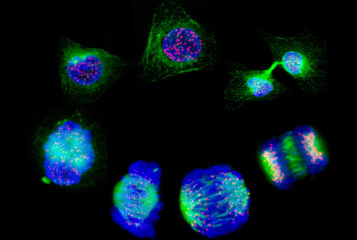Loss of cartilage stem cells drives osteoarthritis in mice
Osteoarthritis progression in mice is due to the loss of stem cells that produce cartilage in the joints, researchers have proposed...
Dr Emma Green is a Volunteer Writer at BioNews. She is fascinated by the brain, and felt destined to undertake a PhD in Neuroscience, which she completed at Keele University. Emma also has a passion for science communication and loves to break down complex ideas and explore engaging ways to promote science to members of the public. Another research interest of Emma's is stem cells, particularly in their application to develop neuro-regenerative therapies.

Osteoarthritis progression in mice is due to the loss of stem cells that produce cartilage in the joints, researchers have proposed...

A study assessing over 36,000 brains has uncovered more than 4000 genes linked to brain structure and development...

The movement of stem cells within hair follicles may explain why hair pigment is lost with age...

Egg cells have been generated from male mouse cells and, once fertilised and implanted into female mice, have developed seemingly healthy, fertile offspring...

Dr He Jiankui, a Chinese biophysicist, has refused to speak about his work creating the world's first genome-edited babies...

An innovative therapy aiming to treat mitochondrial disease has shown encouraging results in six children...

Genetically near-identical male and female induced pluripotent stem cells have been derived from the same person for the first time...

Human neurons have survived transplantation and integrated into the brains of young rats, building a new model to study human brain development...

A type of embryonic cell has been generated from human stem cells for the first time, providing a method to study post-implantation development...

Artificial heart ventricles that closely resemble the structure of the human heart have been developed by researchers at Harvard University, Boston, Massachusetts...
BioNews, published by the Progress Educational Trust (PET), provides news and comment on genetics, assisted conception, embryo/stem cell research and related areas.

